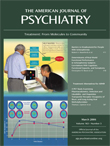The American Psychiatric Publishing Textbook of Personality Disorders
This book, with over 70 contributing authors, is an encyclopedic masterpiece covering the theory, research, and treatment of personality disorders. Contributions range from the historical perspective of the lead editor, John Oldham, to the perspective of Nobel Prize winner, Eric Kandel, whose fundamental neurobiological discoveries have been interspersed with periodic attempts to conceptualize the psychoanalysis of neuroses. There is no simple way to convey the breadth and richness of the material presented in this logically organized and balanced text.
The section on Treatment is the largest and perhaps the most useful for clinicians. Its collective wisdom is best summarized by a series of quotations from some of the 14 chapters on different modalities of treatment.
From Gunderson et al., on levels of treatment: “Harmful is a milieu that encourages long one-to-one talks or the development of personal relationships with staff or other patients. Community meetings or group therapies that emphasize cohesion or bonding among patients are relatively contraindicated.”
From Gabbard on psychoanalysis: “Regardless of which technical strategy is chosen, analysts treating narcissistic patients encounter formidable countertransference difficulties. They often have a sense that they are being used as a sounding board rather than a person with a separate internal world. They may need to tolerate long periods in which they feel they are peripheral to the narcissistic patient’s associations. They may also note that with the hypervigilant variety of narcissistic personality disorder, they feel coerced into focusing their attention completely on the patient during every moment of the session, and they may feel controlled into meeting the patient’s unrealistic expectations of perfect attunement.”
From Yeomans et al. on psychodynamic psychotherapy: “Wary that direct transference interpretation is at too high a level of abstraction for borderline patients, the authors recommend using transference tracers, comments that predict likely future action based on the patient’s previous experience in a way that heightens the patient’s ability to begin to see transference patterns.”
From Appelbaum on supportive psychotherapy: “Asking a question is almost always an implicit assertion of power. Any therapist who doubts this dictum has only to reflect on his own feelings when his patient walks in and says, ‘How was your holiday? Nice tan, where did you go?’ Many therapists feel quite uncomfortable. Some feel somewhat indignant at the thought that the patient is ‘turning the tables.’ After all, the therapist is the one who is supposed to ask questions; the patient is supposed to answer them. The questioner has the power, the other is endangered, defensive, or submissive and obedient.”
And finally, from Sholevar on family therapy: “Prevention of severe psychophathology in the next generation is a significant therapeutic goal with personality disorders due to their ominous impact on the developmental course of children. Family therapy allows the therapist to interrupt circular pathological interactions of the parents and point out the neglect of the children’s basic, developmental, or future needs.”
Among the authors there is a common sense of frustration with the current conceptualization of personality disorders in DSM-IV-TR, both with the isolation of the disorders in axis II and with the diagnostic schema themselves that seem at once too overlapping and too rigidly discriminating. As Oldham states, “Our challenge for the future is to recognize that not all personality disorders are alike, nor are personality disorders fundamentally different from many other psychiatric disorders.” Heim and Westen echo, “A broader range of personality pathology should be one of the primary goals of the revision of Axis II in DSM-V.” So does Widiger, who points out “the heterogeneity among persons with the same diagnosis” and states the obvious, “Personality disorders are not summarized well by one single diagnostic label.” Despite the frustration with diagnosis, there is a consensus among the authors that these are crippling illnesses, rife with conflicts that impinge on the capacity to lead a fulfilling life.
A strength of the book is that personality disorder is considered from the perspective of the family as well as the individual. As Gabbard observes, “Clinicians often remark how the character traits in patients with personality disorders often cause more distress in others than in the patient. However this generalization understates the great extent to which many people with personality disorders suffer as a result of their character pathology.” Sholevar, in recommending family therapy, quotes Minuchin: “the pain of the spouse and other family members should be ‘actualized’ by helping family members to express their feelings openly without fear of making the dependent or avoidant person worse.”
My recommendation for this book comes not from the perspective of an academic researcher but as a clinician who had many years of providing both primary care in a residential in-patient chemical dependency unit and consultation-liaison on an in-patient psychiatry service in the treatment and care of patients with both mood and personality disorders. This is the text that I have been searching for to improve my understanding, treatment, and care of my patients.



